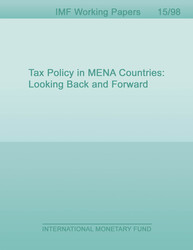
Tax Policy in MENA Countries : Looking Back and Forward
This paper reviews trends in taxation and revenue in MENA countries over 1990-2012, with a focus on non-resource taxes. On average, non-resource revenues declined slightly, while resource revenues soared. Country experiences vary: rates of main taxes and their revenues tend to be higher in the Magreb than in the Mashreq, except for the value-added tax, where lower rates are associated with equal or higher revenue; most oil producers raise little tax revenues—generally less than 5 percent of GDP—and most have reduced them since the late 1990s. But there are similarities: unlike common experience around theworld, income taxes (not indirect taxes) have partially compensated for lost revenue from trade liberalization; revenues from indirect taxes have remained stable; personal income taxes have played an unimportant role as a revenue tool; and fees and stamp duties are significant revenue sources. Looking forward, tax reform challenges will also vary across countries: the Maghreb needs to focus on efficiency-enhancing reforms, especially in capital income and consumption taxes; the Mashreq have some room to increase revenue; and, there are ample opportunities to improve equity and reduce complexity of tax systemsin all countries. Finally, the recent decline in oil prices and revenues is a reminder that even resource-rich GCC countries need to lay the basis of a tax system for the future.
Publication date:
ISBN:
Add to Cart by clicking price of the language and format you'd like to purchase
Available Languages and Formats
Topics covered in this book
This title contains information about the following subjects.
Click on a subject if you would like to see other titles with the same subjects.
resource revenues , tax reform , MENA , tax , revenues , revenue , taxes , General , Personal Income and Other Nonbusiness Taxes and Subsidies , Business Taxes and Subsidies , Taxation , Subsidies , and Revenues: Other Sources of Revenue , Other
Summary
Copyright © 2010 - 2025
Powered by:
AIDC



